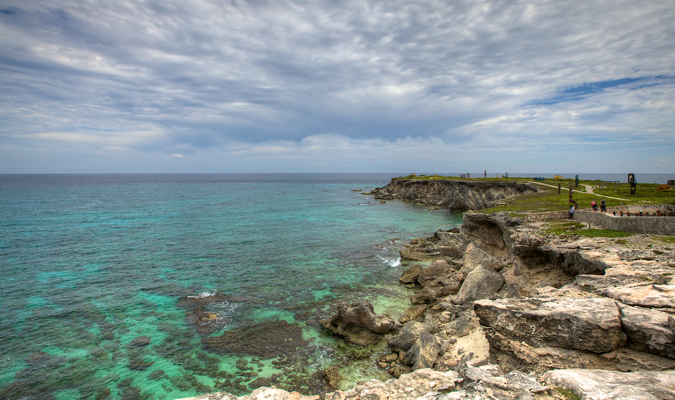Mother Nature has had her eye on Mexico lately with strange phenomenons and elemental surprises happening this year. Here’s what you need to know.
El Niño is here
What is El Niño exactly? Spanish for “the little boy”, it is an irregularly occurring and complex series of weather patterns resulting from variations in ocean temperatures affecting the Pacific-Equator region. That means at any time there can be surprising changes in atmosphere, sudden temperature changes, and shifting rain patterns. In Mexico, El Niño is having an effect by overall lesser rainfall in the northern and western part of the country, while the center, northeast, and Gulf Coast are seeing an increase. Things may change either progressing or regressing as the year continues (source).

Algae on the beach
As ocean patterns change it directly influences a chain of other natural reactions which as a recent result has brought algae to beaches from Texas to Tobago. A massive tide of floating brown sea weed known as Sargassum has been washing on to the shores of the Caribbean including Cancun, Riviera Maya, and Tulúm. This occurrence (which actually has many ecological benefits!) is not dangerous nor continuous and often unpredictable. One week there may be large mounds of sea weed heaped on the beaches and obscuring the translucent sea, while others the beaches are perfectly clean. Many hotels are taking measures to provide clear beach access through clearing the sea weed and removing it from the beach, while others are unable or unwilling to do so due to a lack of human and financial resources, an unwillingness to alter naturally occurring patterns, or long-term concerns that the sea weed will actually protect and enhance their beaches in the long-term. The sea weed accumulation has been most prolific on the stretches of exposed beach and less noticeable in areas that are protected by natural headlands, bays, or coves. In general, and as of writing, the highest accumulations seem to be concentrated around Tulúm with less density of sea weed deposits as you head north to Cancún. Cancun is almost unaffected by the current episode as is Isla Mujeres. Read more: What You Need to Know about Sargassum Invading the Caribbean.
Update: Update on Sargassum Seaweed Affecting Mexico’s Beaches

Whale Sharks are being shy
The migration pattern of the whale sharks to the Mexican-Caribbean Coast changes annually and this year is no exception due to the afore mentioned. In addition to the 6 Things to Know This Whale Shark Season, we feel it is important to add to the list that the season this year in Mexico has been unfavorable as the whale sharks have not be swimming near the surface in good visibility. Journey Mexico continues to monitor conditions and activity on a case by case basis and running tours only under ideal settings.
Hurricanes?
Maybe. Mexico’s National Meteorology System (SMN) forecasts cyclonic activity on the Pacific coast to be higher than normal. On the Atlantic side (Caribbean Sea and Gulf of Mexico), forecasts predict lower activity than normal and a quiet season that will last through November. While there are a number of forecasted tropical storms in a given season, the only ones that vacationers typically need to worry about are those that make landfall. Read more here: 2015 Hurricane Season Outlook










